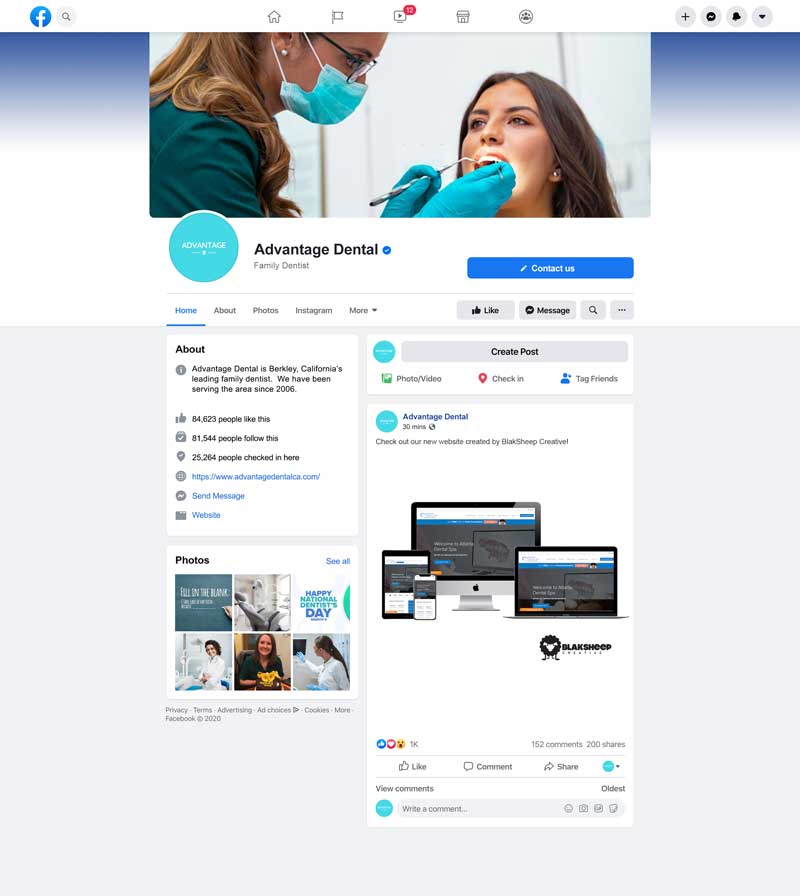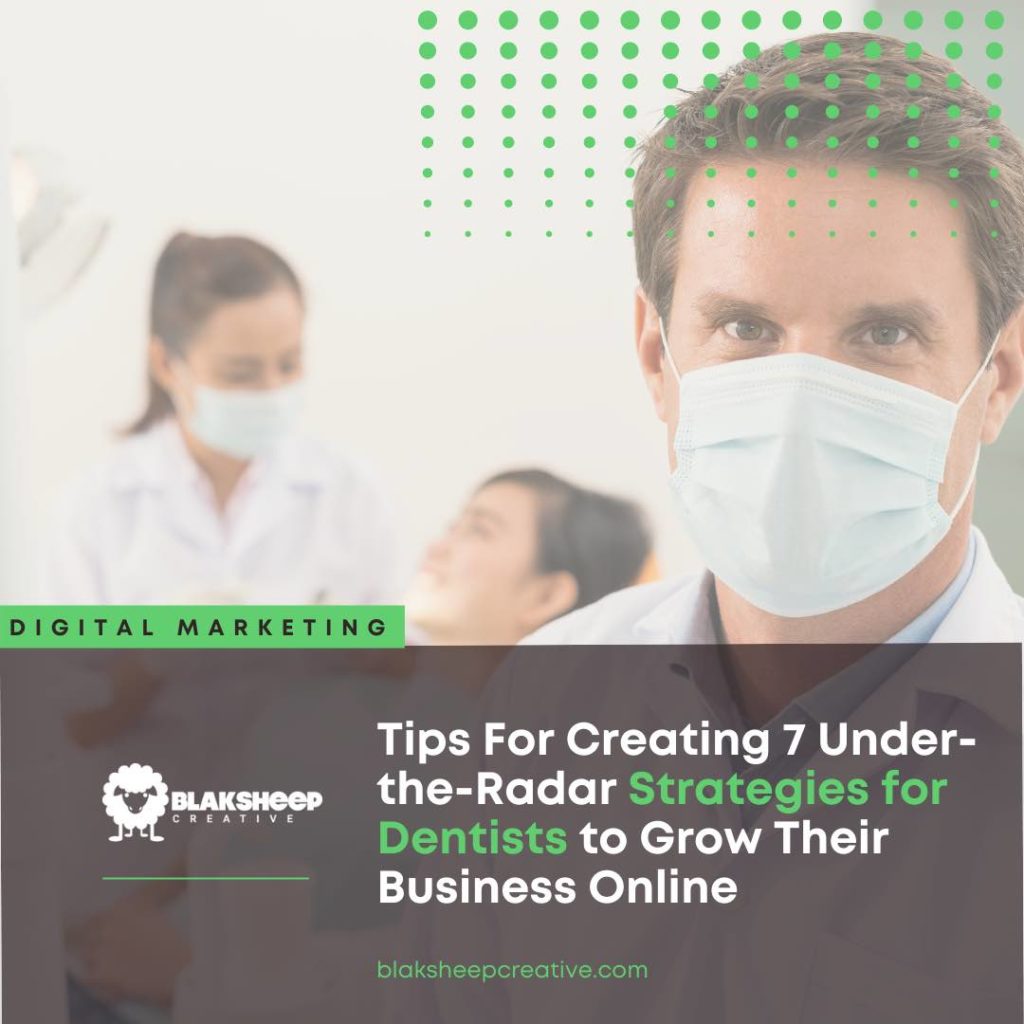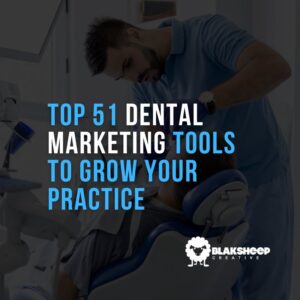Are you looking for ways to take your dental practice to the next level? If so, you may be wondering about digital marketing.
Digital marketing can be a great way to reach more patients and grow your business, but it’s not always easy to know where to start.
That’s why we’ve put together this list of eight under-the-radar strategies for dentists who want to use digital marketing to its fullest potential.
Read on for tips that will help you get more patients through the door and boost your bottom line!
1. Get Started with Digital Marketing
Digital marketing can be a great way to reach more patients and grow your business, but it’s not always easy to know where to start. That’s why it’s essential to get started with digital marketing as soon as possible.
With the help of a digital marketing firm, you can create a plan that will help you reach more patients and grow your business.

2. Use Social Media to Your Advantage
Social media can be an excellent resource for dentists who want to grow their businesses using digital marketing.
For example, you can use social media to share powerful case studies with your community and encourage people to give you reviews on sites like Google, Facebook, and Yelp.
Find your audience where they are.
To effectively use social media, you need to understand how your audience uses social media. For example, if you want to reach millennials, it’s a good idea to focus on platforms like Facebook and Instagram.
Post when your audience is online.
When you post about your dental practice, do you know what day and time is best? If not, it’s a good idea to find out. You can use services like Followerwonk to find out when your audience is most active online so that you’re posting at the correct times.
Repurpose Your Content
One way to use digital marketing is to repurpose your content to reach a larger audience. For example, if you write a blog post (more on that later) or place an infographic on your website, you can then share it via social media and pin it to the top of your Pinterest page.
You can also turn a blog post into a video. If your blog post talks about dental nutrition, you can take that information and turn it into a short video where you share tips for healthy teeth.
3. Optimize Your Website for Search Engines
One of the best ways to reach more patients with digital marketing is to optimize your website for search engines.
When you optimize your website, you make it easier for people to find you online. This can be a great way to reach more patients and grow your business.
With the dental landscape so competitive, it’s vital that your practice rank higher than the other dental practices in your area.
On-Page SEO
The key to ranking higher in search engines is on-page SEO.
On-page SEO is like the backbone of your website’s visibility in search engines. It’s the technical finesse that ensures search engines not only find your site but also understand and favor it. On-Page SEO encompasses several key elements that you need to nail down:
Keywords: They are the compass that guides your SEO strategy. Your keywords should seamlessly integrate into your title tags, meta descriptions, headings, URLs, and content, painting a coherent picture of your site’s topic and relevance.
Title Tags: Think of your title tag as the bold headline of your digital ad in search results. It should be succinct, no more than 60 characters, and pack a punch with your primary keywords.
Meta Descriptions: These are your chance to hook your audience in the SERPs. Meta descriptions provide a brief summary of your page content and should be crafted to entice users to click through to your site.
URLs: Keep them neat, concise, and keyword-enriched. A clean URL structure not only aids in ranking but also enhances user experience.
Content: The king of SEO. Your content should be a treasure trove of uniqueness, freshness, and relevance. It’s not just about peppering your content with keywords; it’s about delivering value that keeps users engaged and satisfied.
While these elements are the pillars of On-Page SEO, the devil is in the details. Crafting each component with precision can transform your site from being just ‘another page’ in the SERPs to a standout contender for the top spot. For a deep dive into refining these elements and ensuring your website not only meets but exceeds modern SEO standards, explore our comprehensive guide, “Is Your Website Stuck in the Past? ‘Home’ in SERPs is No Laughing Matter.” Learn the nuances of On-Page SEO that can make a real difference in how search engines and users perceive your site.
Remember, On-Page SEO is not a one-time setup. It’s an ongoing commitment to excellence, relevance, and user satisfaction. Make it count.
Off-Page SEO
When it comes to ranking higher in search engines, off-page SEO is just as important as on-page SEO.
Off-Page SEO includes things like:
Backlinks. Backlinks help you get more exposure online. To get backlinks, you can reach out to other websites relevant to yours and ask them for a link.
Reviews. If patients enjoy using your services, ask them to leave reviews on sites like Google, Facebook, Yelp, etc. The more positive reviews you have, the higher you’ll rank in search engines.
Google Business Profile.
If you have a Google business profile, you can claim your local listing to show up higher in search engines.
But don’t just claim your listing and let it sit there!
Update it regularly and keep it active, so Google (and potential patients) knows you’re still there.
4. Produce Quality Content
When you produce quality content, you make it easier for people to find you online. This can be a great way to reach more patients and grow your business.
Quality content is vital because it helps you stand out from the competition. When you produce high-quality content, you’re showing potential patients that you’re an authority in your field. This can help you attract more patients and grow your business.
Learn more about creating quality content in our recent blog post, “What is High-Quality Content, and How Do I Create It to Keep Google Happy?“
How to produce high-quality content that patients will love:
Plan Ahead
One of the best ways to produce high-quality content is to plan ahead. When you have a content plan in place, you’ll know what you’re going to write about and when you’re going to write it. This can help you stay on track and produce high-quality content regularly.
Research Your Topic Thoroughly
You’re the expert in your field, so this may not apply. However, if you’re going to write about a topic that you’re not an expert in, it’s important that you thoroughly research your topic. To produce high-quality content, make sure that what you’re writing is accurate and credible.
Write for Your Audience
When you write for your audience, you make it easier for them to understand what you’re saying. This can help you produce high-quality content that they appreciate.
There are two ways to write for your audience:
You can write for your customer personas (e.g., “caring about dental health”) instead of just writing for yourself. This will ensure that the information is valuable and relevant for everyone who reads it, including potential patients. You can use short, easy-to-understand sentences that don’t include industry jargon or acronyms.
You can also write for other members of your industry.
People in your industry are always looking for fresh, informative content that they haven’t seen before. So, it’s important to be an expert in your field by producing high-quality content regularly.
Pro Tip: One of the best ways to raise your E-A-T with Google is by writing good content. Learn more about how to demonstrate Expertise, Authority, and Trustworthiness.
Plus, do you remember those backlinks we discussed earlier? These posts geared towards other dental professionals can help you get more backlinks, which will help you rank higher in search engines.

Include Images and Videos
When it comes to producing quality content, visuals are key! When you add visuals to your posts, people are more likely to share them on social media. This helps increase the reach of your content, which in turn helps you produce more high-quality content.
Let’s say you want to write about how water can impact dental health. You could include an image of someone brushing their teeth above running water to grab a reader’s attention.
You could also produce a video to help give your post even more visibility. For example, you could shoot an informational video about how water impacts dental health and upload it to YouTube. Then, link the YouTube video back to your website in the text of your blog post.
This can be beneficial because when dental patients search Google for “how water impacts dental health,” they’re more likely to find your blog post because it shows up in the image and video results.
Incorporate a Call-to-Action
When you include a call-to-action in a blog post, you give people a reason to contact you or answer their questions. This can help you generate more leads, so it’s important to include a call to action when publishing a blog post.
For example, if your answer to “how water impacts dental health” is that it helps make the mouth and gums healthy and strong, use this information to create a call-to-action like, “find out how to make your mouth and gums healthy and strong.” This will encourage people to contact you for more information.
Make it Easy for Readers to Share Your Content.
When you include share buttons or social media icons at the top or bottom of your blog posts, readers are more likely to share them on their social media accounts.
This can help you reach a broader audience and generate more high-quality leads. Plus, it will make it easier for people to find your blog posts in search engines like Google and Bing (since they’ll be shared).
Write Compelling Title and Headlines
When writing compelling titles and headlines, there’s one rule: Make them as descriptive as possible. This will ensure that people know what they’re clicking on before clicking on your blog post.
For example, if you write a blog post about “how water impacts dental health,” the title could be something like “A Guide to How Water Effects Oral Health.” This makes it clear what people can expect to learn after reading your blog post.
Make sure to use keywords in titles and headlines, but don’t go overboard since this can make your posts look spammy.
Include Internal Links
Including internal links in your blog posts can help improve their SEO by sending more traffic back to the pages where the links are located. For example, if you write a blog post about how water impacts oral health, you could link to previous blog posts or other pages on your website.
Include an Author Bio
When you include a bio at the bottom of each blog post, it tells readers more about who you are and what you do. This can help establish your credibility as a dental professional and shows that you’re an expert in the field.
Your bio should be between 100-200 words and include a professional photo of yourself.
Keep it Short and Sweet.
Studies have shown that people prefer content under 500 words when they’re on mobile devices. If you want to produce high-quality content, make sure it’s easy to read and digest quickly.
Don’t fall for the myth that longer content is better.
Don’t believe us?
Here’s what Google’s own John Mueller has to say about blog post length:
I agree with you & Mihai :). Word count is not indicative of quality. Some pages have a lot of words that say nothing. Some pages have very few words that are very important & relevant to queries. You know your content best (hopefully) and can decide whether it needs the details.
— 🐐 John 🐐 (@JohnMu) July 24, 2018
and
In a Reddit thread, when asked about content length as a ranking factor, Mueller said,
“Word count is not a ranking factor. Save yourself the trouble.”
Instead, focus on creating high-quality, informative blog posts that don’t feel like a chore to read.
Since you’re not trying to game the system, it’s okay if your posts are shorter or don’t follow typical “rules” about blog post length.
Give People What They’re Looking For
Lastly, if you want to write blog posts that people actually read, make sure they address their questions or concerns. This means answering the question of “how water impacts dental health” with information about what it does for oral health in general.
Writing blog posts isn’t about tricking people into clicking on your website. It’s about providing people with valuable resources and information that they actually want and need.
Now that you know how to write blog posts that people read let’s talk about how you can spend that dentist money!
5. Expand Your Marketing Budget
When you want to grow your business with digital marketing, it’s important to expand your marketing budget.
It might seem challenging at first, but there are many ways to cut costs and still generate new leads for your practice. For example, you can use free social media tools or create content in-house. Read our recent blog post to learn what you can do to craft your in-house team for marketing success.
How much should a dentist spend on marketing?
It all depends on your practice’s size, your target audience, and what you want to accomplish.
We surveyed 100 dental offices throughout the United States and found the results in the graphic above.
Dental offices we surveyed allocated anywhere between zero to $5000+ per month, with the majority allocating $500 – 1000 per month.
According to a rule-of-thumb, dental clinics should aim to keep their overall expenses below 60 percent of their total budget. Payroll is generally the most expensive element of any budget, and marketing is typically at the bottom of cost control.
Dental marketing expenditures by dental offices average between 4 and 7% of their yearly income. Industry research typically shows a lower average, around 4%, while marketing firms’ studies usually show a higher average of about 7%.
The recommended average for a de novo firm is approximately 20% of projected year one revenue.
These are the averages presented in many studies, but the amount you dedicate to your marketing budget will be determined by many things, including your own development objectives!
In short, your dental marketing budget should be between 4-7% of your overall practice revenue. But how much you spend will depend on what type of marketing activities you want to do and the size of your business.
Don’t Fall for Digital Marketing Hype.
It’s easy to fall into the trap of believing that certain digital marketing activities are essential for growing dental practice.
This is especially true when you read the latest blog posts claiming that SEO, social media, or content marketing are “must-haves” for dental offices.
You don’t have to bring in some dental marketing “guru” who will say anything to get you to sign up.
Are you using a digital marketing company? Make sure they aren’t promising you the world and giving you nothing in return!
Instead, seek out resources that provide helpful guidance.
Many of these resources are free or inexpensive, so there’s no reason not to take advantage of them!
Don’t feel like you need to do everything. Just focus on one or two strategies that fit into your budget and goals and build from there.
But if you really want to spend your money:
6. Invest in Social Media Marketing
When you want to grow your business with digital marketing, it’s important to invest in social media marketing.
Social media can be a great way to reach more patients and grow your business. In fact, social media is one of the most effective ways to get potential patients.
That’s why investing in social media marketing is important if you want to reach more patients and grow your business.
Again, there is no need to hire a self-professed “expert” to come in and tell you that all of your problems will be solved if you pay them thousands of dollars to run your Facebook and Instagram accounts.
It’s all smoke and no fire.
Instead, save money and learn how to use social media to grow your dental practice!
You don’t need a fancy college degree or some certification
Many free resources are available online, like this blog, which can help you with everything from Facebook ads to connecting on Twitter! You should do some research and see what’s out there to
7. Connect with Local Customers Online
You can use social media, online forums, and other websites to do this. It’s a great way to connect with potential patients and grow your dental business.
8. Track Results and Optimize
Digital marketing can be a great way to reach more patients and grow your business.
But you need to use actual data to see if it is working. That’s why you should track results and optimize what you are doing based on the data.
For example, if you see that your website isn’t generating leads for your practice, you might need to update it. On the other hand, if you see that social media is working well for your business, you can invest more in it and try to reach even more patients.
Key Takeaway
The key takeaway from this article is that digital marketing can be a great way to reach more patients and grow your dental practice.
But you need to know what you’re doing, track your results, and optimize what you are doing based on the data – no matter how much or little money you spend. The seven strategies we’ve outlined in this post should help you understand where to start when it comes time to optimize your online marketing strategy!
Looking for help with your dental marketing? Fill out the form below today for a free consultation! We can help you reach more patients and grow your business!
Visit our dental marketing services page to see how we can help your practice!
About BlakSheep Creative
BlakSheep Creative is a premier dental marketing company that provides strategies to help grow dental practices.
As a leader in the industry, BlakSheep Creative houses expertise in website design & development, online reputation management, digital marketing strategies, SEO, PPC, and social media marketing.
With over two decades of experience in dental marketing, BlakSheep Creative has worked with scores of clients throughout the United States – including dentists, orthodontists, oral surgeons, family & cosmetic dentists, and more.
Contact us to learn what we can do to help your practice grow today!


